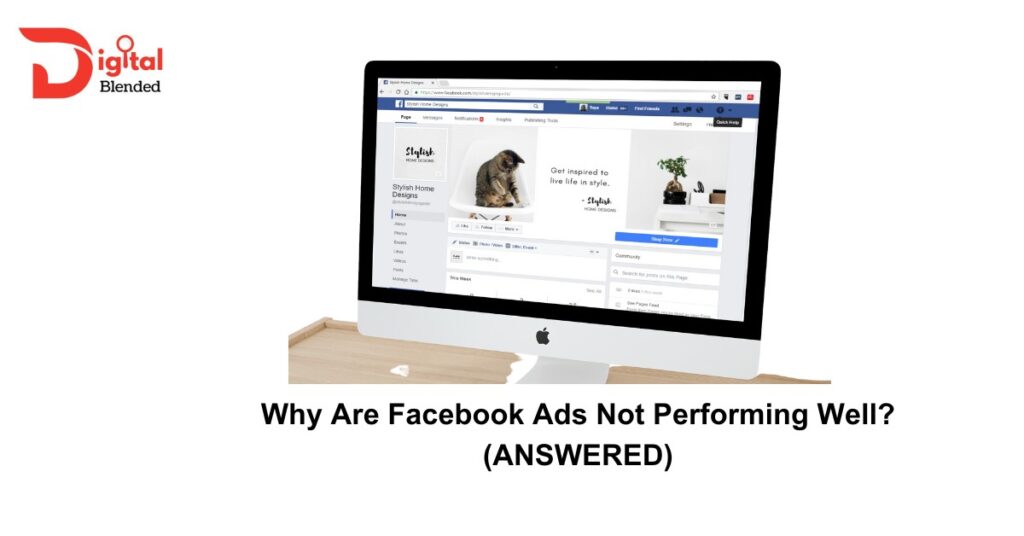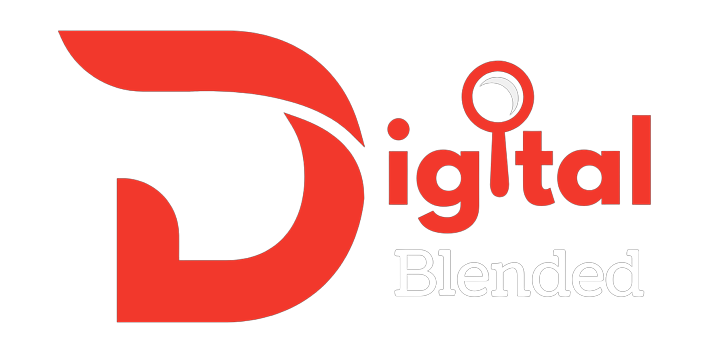Explore the reasons behind the underperformance of Facebook ads and discover strategies to overcome these challenges. From inaccurate targeting to ad fatigue, poor design to insufficient budget allocation, uncover the factors that hinder the success of your Facebook ad campaigns. Gain valuable insights and expert opinions on how to optimize your ads and achieve better results on this powerful advertising platform.
Introduction:
In today’s digital landscape, Facebook has emerged as a prominent platform for businesses to connect with their target audience and drive meaningful results through advertising. With its massive user base and advanced targeting capabilities, Facebook ads have the potential to deliver exceptional outcomes. However, many advertisers have encountered challenges when their Facebook ad campaigns fail to meet expectations. In Digital Blended view, the under performance of Facebook ads can be attributed to a combination of factors, including inaccurate targeting, ad fatigue, poor ad design and copy, insufficient budget allocation, and overlooking ad performance data. Let’s explore each of these factors in more detail.
Inaccurate Targeting: Reaching the Right Audience
Effective targeting lies at the heart of any successful advertising campaign, and Facebook provides advertisers with an array of targeting options to help refine their audience reach. However, inaccurate targeting remains a significant reason for poor ad performance. This can result from insufficient research on the target audience’s interests and behaviors, vague definitions of target demographics, or ineffective utilization of Facebook’s targeting features. To overcome this challenge, it is essential to invest time in understanding your audience thoroughly, leveraging Facebook’s targeting tools to their fullest potential, and constantly refining your audience selection based on data and feedback.
Ad Fatigue: Combatting Audience Exhaustion
In the fast-paced digital world, users are bombarded with an overwhelming amount of content, including advertisements, on a daily basis. Ad fatigue occurs when the target audience becomes desensitized or disinterested due to repetitive exposure to the same ad. As a result, the performance of the ad campaign suffers, with decreased click-through rates (CTR) and conversions. To combat ad fatigue, advertisers must focus on refreshing their ad creatives regularly, testing different variations, and strategically rotating ad sets to maintain engagement and relevance. This approach ensures that your audience remains captivated and motivated to take action.
Poor Ad Design and Copy: Crafting Compelling Visuals and Messaging
In the competitive landscape of Facebook advertising, capturing users’ attention and delivering a compelling message are crucial. Poorly designed ads or weak ad copy can fail to engage the target audience effectively. To overcome this hurdle, it is imperative to invest in visually appealing ad designs that align with your brand identity and optimize them for mobile devices. Additionally, crafting persuasive ad copy that clearly communicates your value proposition and motivates users to take the desired action can significantly enhance ad performance.
Insufficient Budget and Bid Strategy: Maximizing Reach and Visibility
Facebook’s ad platform operates on an auction-based system, where advertisers compete for ad placements. Inadequate budget allocation or a suboptimal bidding strategy can limit your ads’ reach and hinder their performance. To address this challenge, it is essential to allocate a sufficient budget to support your campaign objectives and develop a well-informed bidding strategy. Consider factors such as audience value, competition, and ad relevance when determining your bidding approach. By doing so, you can enhance your ads’ visibility and increase the likelihood of reaching your target audience effectively.
Ignoring Ad Performance Data: Leveraging Analytics for Optimization
Facebook provides robust analytics and performance metrics to help advertisers evaluate the effectiveness of their ad campaigns. However, many advertisers overlook these valuable insights. Failing to analyze and act upon the data prevents you from optimizing your ads, identifying underperforming elements, and making data-driven decisions to improve results. To leverage ad performance data effectively, it is essential to regularly review the analytics, identify patterns, and make necessary adjustments to optimize your campaigns. By constantly refining your strategies based on data-driven insights, you can enhance the performance of your Facebook ads.
Conclusion:
While Facebook ads offer immense potential for businesses to connect with their target audience and achieve their marketing objectives, several factors can impede their effectiveness. Inaccurate targeting, ad fatigue, poor ad design and copy, insufficient budget allocation, and neglecting ad performance data are common culprits behind underperforming campaigns. By addressing these challenges and implementing strategic optimizations, advertisers can unlock the true potential of Facebook ads.
To succeed with Facebook advertising, businesses must prioritize ongoing testing, learning, and adaptation. By refining targeting parameters, combating ad fatigue, investing in compelling ad design and copy, allocating an adequate budget, and leveraging performance data for optimization, advertisers can significantly improve the effectiveness of their Facebook ad campaigns. Remember, success with Facebook ads requires a continuous commitment to improvement and a data-driven approach to make informed decisions.


